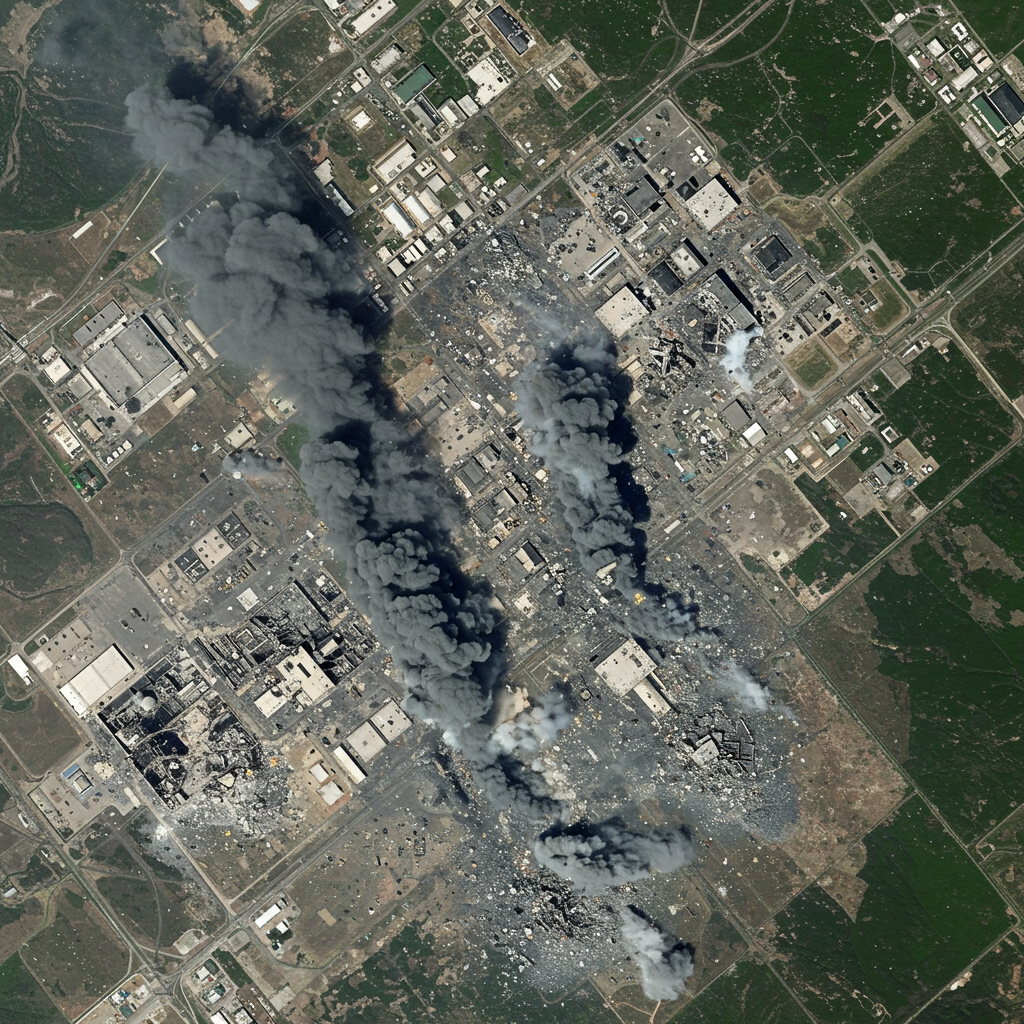Satellite Images Reveal Extent of Damage to Iran’s Nuclear Infrastructure After US Strikes
Unprecedented satellite imagery is providing the first detailed look at the aftermath of recent U.S. airstrikes on key Iranian nuclear facilities. Captured by Maxar Technologies just days after the June 22, 2025 operation, dubbed “Midnight Hammer,” these images offer stark visual evidence of significant destruction across three sites considered central to Iran’s controversial nuclear program: Fordow, Natanz, and Isfahan.
The strikes, carried out by a force including B-2 Spirit stealth bombers and utilizing heavy bunker-buster munitions, appear to have targeted both aboveground facilities and the deeply protected underground components of the program. The satellite views reveal scarring on the landscape, destroyed buildings, and apparent entry points where powerful bombs penetrated deep below the surface.
Damage Detailed Site by Site
Analysis of the high-resolution satellite photographs highlights the impact at each targeted location:
Fordow Fuel Enrichment Facility: Located deep inside a mountain near Qom, Fordow is one of Iran’s most fortified nuclear sites, designed to withstand aerial attack. Images show multiple large craters blasted into the access roads leading to the facility and directly at the entrances to its underground tunnel complexes. Several perimeter buildings on the surface appear to have been completely destroyed. One prominent crater is visible on an access road near the facility entrance. Experts analyzing the images suggest the strikes strategically targeted areas like potential ventilation shafts on the ridge above the buried complex, rather than solely relying on penetrating the main entrances. The aim may have been to use the sheer power of the munitions to create a shockwave capable of causing internal damage or collapse to the deeply buried structure. However, the depth of Fordow makes it difficult for satellite images to assess the full extent of internal damage. Satellite activity in the week prior to the attack, showing numerous trucks at the site, has led to speculation about potential defensive preparations or the movement of materials.
Isfahan Nuclear Technology Center: Satellite views of the Isfahan site indicate new destruction on the surface. More detailed imagery specifically shows tunnel entrances that appear to have sustained direct hits. This aligns with reports that the operation sought to neutralize buried infrastructure previously challenging to target. The Isfahan facility reportedly sustained heavy damage, partly attributed to more than two dozen Tomahawk cruise missiles launched from a submarine.
- Natanz Facility: A historic site in Iran’s nuclear efforts, Natanz also shows evidence of the strikes. Satellite images captured after the bombing display two distinct craters. Interestingly, these craters now appear to be filled and covered with dirt, potentially indicating attempts by Iran to remediate or conceal the damage. The strikes targeting Natanz were reportedly focused on the critical underground centrifuge halls used for uranium enrichment. A large crater was visible over the underground portion of the site.
- www.foxnews.com
- www.businessinsider.com
- www.wired.com
- www.dailymail.co.uk
- www.ynetnews.com
Additionally, separate satellite images documented significant damage in areas of the capital city of Tehran, near Shahid Rajaee University. This destruction is believed to be linked to suspected nuclear program facilities located in that vicinity.
The Operation and the Munitions
Operation “Midnight Hammer” involved a substantial military effort. Seven B-2 Spirit stealth bombers were reportedly used to deliver the primary payload on the nuclear sites. General Dan Caine, Chairman of the Joint Chiefs of Staff, stated that 14 heavy bunker-buster bombs were dropped. The weapon identified is the 30,000-pound GBU-57 Massive Ordnance Penetrator (MOP), the U.S. military’s largest non-nuclear bomb, designed to penetrate hundreds of feet of hardened targets. The operation marked the first-ever operational use of the MOP, with several specifically targeting Fordow. In total, over 125 U.S. aircraft were involved, employing a significant amount of deception and utilizing 75 precision-guided weapons, including the MOPs and Tomahawk missiles.
Assessments and Implications
Officials and experts have begun to weigh the impact of the strikes. IAEA Director General Rafael Grossi confirmed that key buildings and underground systems at all three targeted sites were hit, though Iranian authorities reported no increase in off-site radiation levels. American officials have stated that Iran’s nuclear program has suffered a severe setback. President Donald Trump characterized the mission as a “spectacular military success,” claiming the facilities were “completely and totally obliterated.” A retired Israeli general noted the strikes created “global deterrence.”
However, assessing the long-term strategic impact is complex. While the tactical execution appears to have caused significant damage to specific facilities, experts suggest the strike might be “tactically brilliant, but strategically incomplete.” This view stems from the fact that Iran still possesses nuclear material, potentially other viable underground facilities, and the technical capability to produce centrifuge components necessary for enrichment.
The U.S. action occurred amidst an ongoing campaign by Israel targeting Iran’s nuclear and military capabilities. Israeli Prime Minister Benjamin Netanyahu praised President Trump for attacking the nuclear sites. Hours after the U.S. strikes, Iran reportedly retaliated by launching ballistic missiles and drones targeting Israel, resulting in injuries. Iran’s Foreign Minister publicly condemned the U.S. action and warned of increased global danger.
While battle damage assessments are ongoing, the satellite images provide crucial public confirmation that the U.S. strikes inflicted substantial visible damage, scarring the surface and impacting the access points of Iran’s most sensitive nuclear facilities. The full extent of the damage to the deepest underground sections remains challenging to ascertain solely from overhead imagery.




